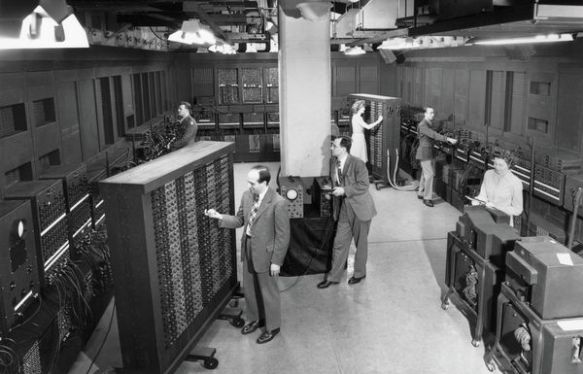
what’s your best estimate of how much space it takes to store paper records and documents in the US today?
- 5 acres
- 20 acres
- 100 acres
while all of these options represent a lot of real estate, in fact the storage of paper records utilizes 8000 acres of land — the equivalent of 6000 football fields, #small cities or the state of Delaware. now that’s a massive amount of space that could be more productively used than for storing paper. not to mention that warehousing records this way is very expensive, makes them difficult to retrieve and search, and poses a security risk.
yet the scale of the problem also reveals the need. every year, U.S. companies have to archive millions of records for up to 7-15 years to meet legal, compliance, tax and other business requirements. extrapolate demand for document storage over the next decade and you can see that the old fashioned, paper-based real estate solution is simply unsustainable.
the market needs innovation
since its inception just after World War II, the records and information market has seen little if any evolution of the business in spite of significant advances in computing and robotics. providers still store paper in cardboard boxes and use planes, trains and automobiles to transport data back to the customer. i would bet that it takes just as long to pull a record from storage today as it did in the 1950s. change has not occurred because there are misaligned incentives in the market. the current providers operate as REITs and as a REIT, performance is measured by tenant occupancy rates. think of these services as landlords and the boxes of records they store as their “tenants” where the incentive is to keep these boxes on the rent roll. a box of records that is digitized is a box that is no longer a tenant.
that said change has been hard. up until now, customers have had 2 sub-optimal options when doing paper records conversion:
- they can digitize in-house. this is costly, time consuming, and risky. what company wants to staff up internally to scan records? even when they do scan internally, they still have to hire multiple vendors to do the value-added stuff like shredding, indexing, uploading to a digital repository, and integrating to their other enterprise systems.
- customers could use their existing records warehousing vendor to quarterback the entire project. not only is this costly (customers pay upwards of $1200/box) but it’s slow because existing records vendors still use human labor to do the digitization.
as enterprises migrate business applications to the cloud, what they want is to store data as 1s and 0s, not pulp, and have it transported instantly over fiber, not highways.
meet Ripcord
one company that has figured out a better way to address the $25B paper records market is Ripcord, a company in which kleiner perkins has just invested $9.5m in the Series A round.
Ripcord is transforming the traditional records management industry by using robots and AI to scan paper records, make them searchable on the cloud and integrate them into existing enterprise systems. it works like this: when Ripcord scans a box of records, it knows where that box came from, who was the owner, how old the records are, and what type of records are inside the box (legal files, HR files, medical files, etc). once on Ripcord’s platform, the system learns to auto-categorize records, to identify anomalies, and in general to help customers better manage their records. Ripcord’s robotics have also been able to overcome some simple but significant logistical challenges such as removing paper clips from documents and avoiding copying mistakes by grabbing multiple sheets at one time.
as with all businesses that are disrupted, the primary beneficiary will be the customer who, using services like Ripcord, will save up to 10x what they would have spent on traditional document storage and derive faster access, utility and security for digitized records. customers aren’t waiting in line. It sometimes takes startups years to find product-market fit but as a testament to how badly needed this service is, Ripcord had large customers signing up before they were done with their production work-cell. document storage welcome to the 21st century!










